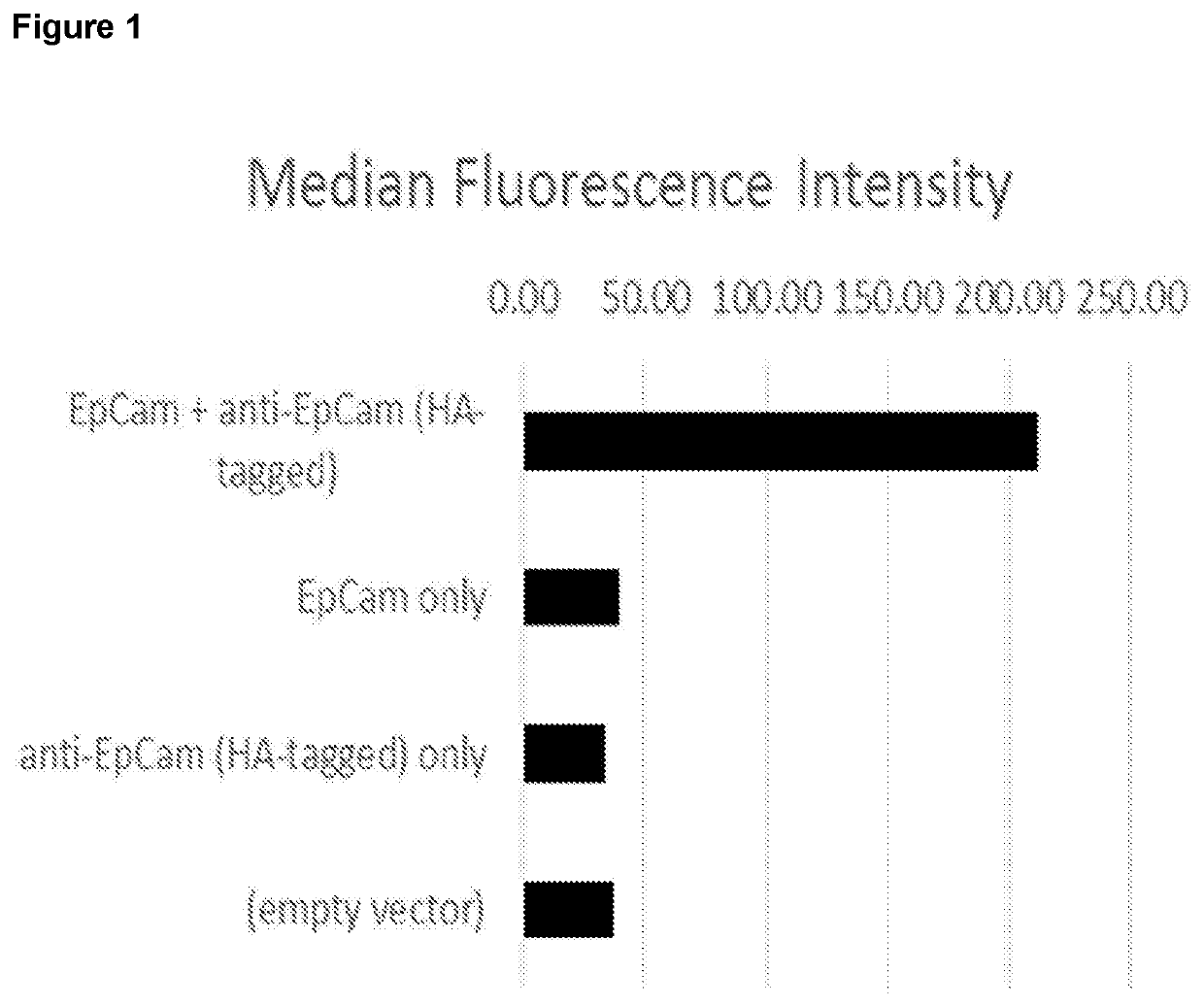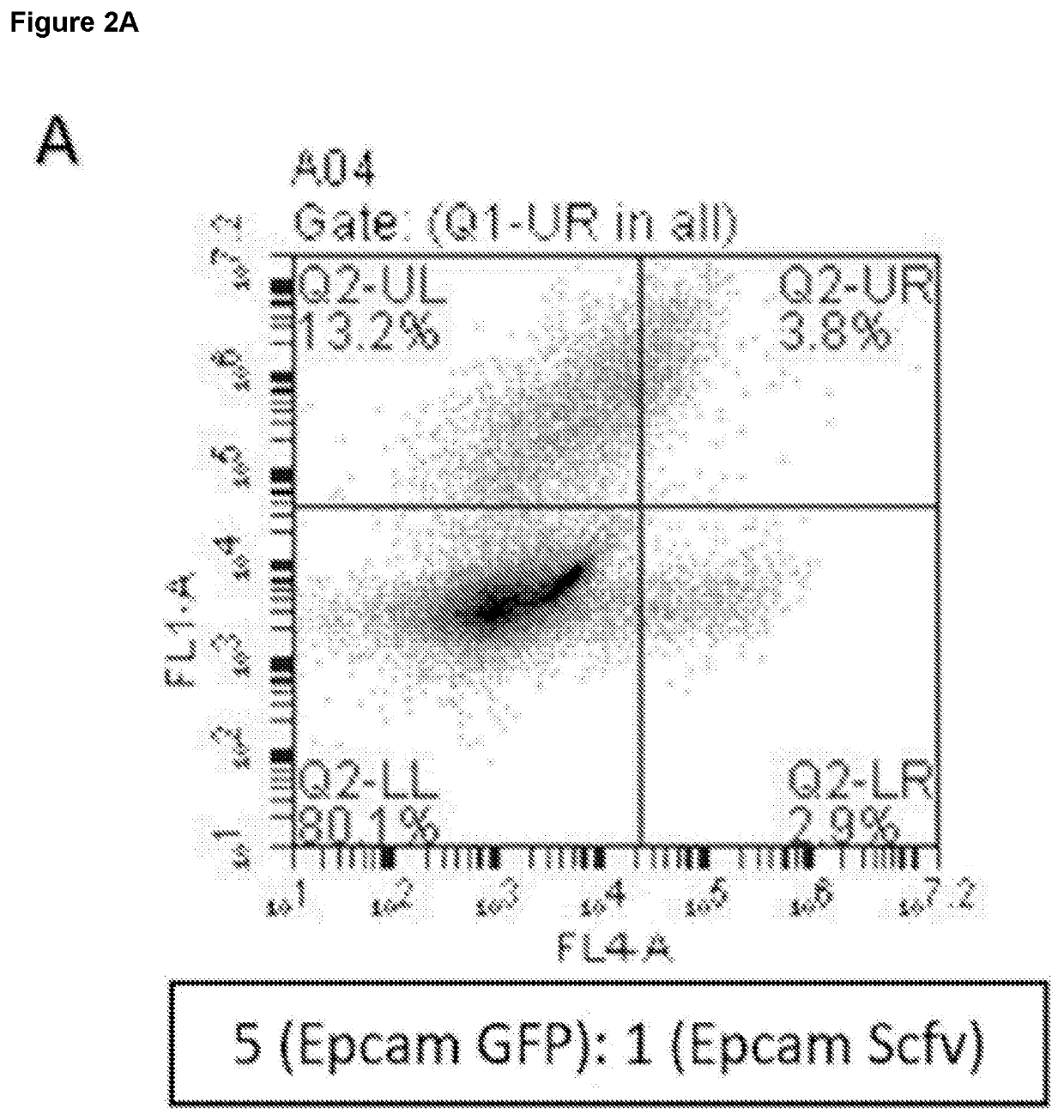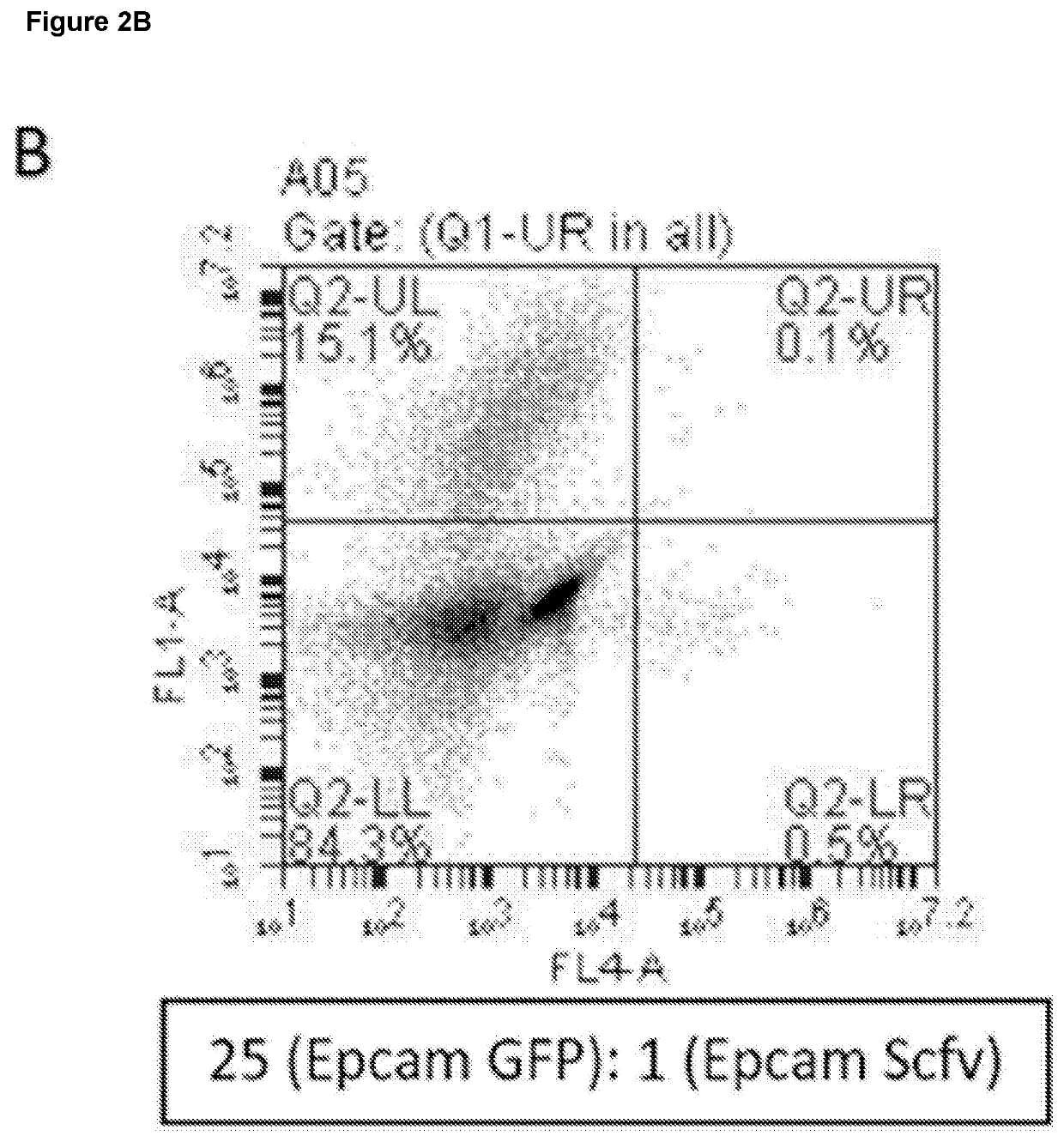Method of Selecting for Antibodies
a technology of antibodies and antibodies, applied in the field of antibodies, can solve the problems of limited strategies, difficult to define naturally-occurring human antibodies, and difficulty in defining monoclonal antibodies with sufficient potency, so as to reduce the level of cross-binding, improve the method sensitivity, and reduce the effect of cross-binding
- Summary
- Abstract
- Description
- Claims
- Application Information
AI Technical Summary
Benefits of technology
Problems solved by technology
Method used
Image
Examples
example 1
tion of Self-Labelling by Cells Expressing Anti-EpCAM Antibodies
[0296]Epithelial cell adhesion molecule (EpCAM) was selected as a suitable target polypeptide (bait antigen). EpCAM is a glycosylated, 30- to 40-kDa type I membrane protein containing three potential N-linked glycosylation sites.
[0297]HEK293 cells were transfected with an EpCAM-expression construct (HEK293 cells are normally EpCAM negative) together with a secreted HA-tagged anti-EpCAM single chain antibody expression-construct. After a 24-hour incubation period, the cells were stained with a fluorescently-labelled anti HA-tag antibody and analysed by flow cytometry to determine which cells had self-labelled their membrane EpCAM with the encoded anti-EpCAM antibody.
[0298]The results are shown in FIG. 1. Cells expressing both the ‘bait’ antigen (EpCAM) and the scFv became highly fluorescent, whereas all of the other cells (expressing either EpCAM only or the scFv only) did not. This shows that cells secreting scFv can la...
example 2
g Stringency to Prevent Labelling of Irrelevant Cells
[0299]Two populations of EpCAM-expressing cells were made. Some expressed the anti-EpCAM antibodies, while others instead expressed green fluorescence protein (GFP). Cells were mixed at different ratios (always with the antibody-expressing cells in the minority), incubated for different times, fixed and surface-bound antibody was visualised by staining in the red channel. The small number of cells expressing the antibody invariably labelled themselves first, giving rise to cells in the lower right hand quadrant of the flow cytometry plot (cells were red but not green, indicating that the antibody-producing cells were labelled before the irrelevant cells).
[0300]The results are shown in FIG. 2A to 2D. Even at a dilution of 1:125, an appreciable number of cells appear in the lower right quadrant, representing cells expressing antibodies that bind the cell-surface antigen.
example 3
n of Antibodies to DRD1
[0301]In this example, the target polypeptide (bait) is DRD1; this is expressed in CHO cells (see FIG. 3 for an overview). A retrovirus transfer vector is used to clone the target polypeptide (bait) construct and the antibody libraries into the CHO cells.
[0302]The target polypeptide (bait) cell lines are produced by using the retrovirus system to integrate the gene for the target polypeptide (bait) into the host cell (CHO) genome along with a selectable marker (see FIG. 4). The target polypeptide construct also contains the gene for the Tet repressor (TetR). Target polypeptide (bait) expression is driven by a doxycycline-inducible promoter.
[0303]A library of retrovirus particles encoding a cDNA-based library of human scFv sequences of human-like scFv sequences is used to infect the CHO cells. For the scFv libraries, the retrovirus transfer vector is modified to contain a constitutive promoter (SFFV) and the flanking regions of the scFv antibody subunits (see F...
PUM
| Property | Measurement | Unit |
|---|---|---|
| volume | aaaaa | aaaaa |
| volume | aaaaa | aaaaa |
| volume | aaaaa | aaaaa |
Abstract
Description
Claims
Application Information
 Login to View More
Login to View More - R&D
- Intellectual Property
- Life Sciences
- Materials
- Tech Scout
- Unparalleled Data Quality
- Higher Quality Content
- 60% Fewer Hallucinations
Browse by: Latest US Patents, China's latest patents, Technical Efficacy Thesaurus, Application Domain, Technology Topic, Popular Technical Reports.
© 2025 PatSnap. All rights reserved.Legal|Privacy policy|Modern Slavery Act Transparency Statement|Sitemap|About US| Contact US: help@patsnap.com



